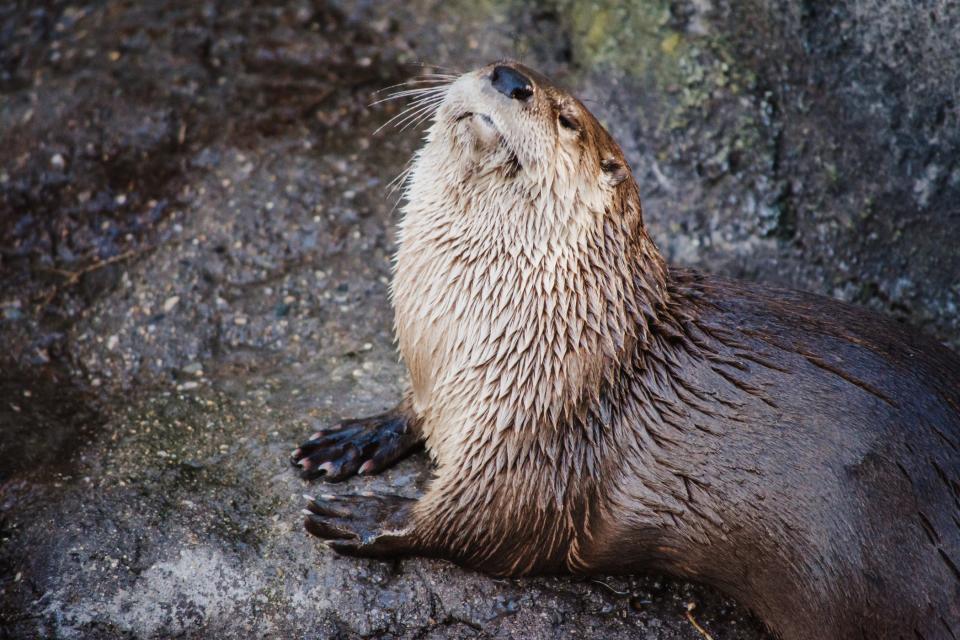What animal is cute, fuzzy and found on almost every continent (except Australia and Antartica)? Otters, of course.
Part of the weasel family, these mammals are divided into 13 existing species. Some can be found floating in freshwater rivers and lakes, while others swim across the Pacific Ocean, according to National Geographic.
Depending on its habitat, the diet of an otter can vary.
What do otters eat?
Otters are carnivores, so their diets primarily consist of meat. What type of meat depends on what’s available. Most otters will eat crustaceans and fish, according to the Blue Reef Aquarium.
For the North American river otter, fish, crayfish, frogs and turtles are on the menu, Smithsonian’s National Zoo and Conservation Biology Institute reports. Meanwhile, sea otters may snack on crabs, snails, urchins, clams, mussels and abalone, according to the Monterey Bay Aquarium.
Otters have very fast metabolisms and will eat 25% of their body weight daily to maintain their size and spend 60% of their day hunting for food, the Blue Reef Aquarium reports.

What is the lifespan of an otter?
An otter’s lifespan depends on the species, and if it’s in captivity or in the wild.
For example, the North American river otter’s lifespan is 12 years on average, according to the Smithsonian. The oldest recorded river otter was 27 years old.
On the other hand, the maximum estimated lifespan of a sea otter in the wild is 23 years, the National Parks Service reports.
What’s the difference between a river otter and a sea otter?
The main difference between the river otter and sea otter is in the name, according to the Seattle Aquarium. Sea otters are marine mammals and will spend the majority of their lives in the water. Conversely, river otters are semi-aquatic and mostly live on land, using water for food and transportation.
Size is another factor that helps distinguish the saltwater mammal from its freshwater counterpart. Sea otters are larger. On average, females will weigh up to 60 pounds, while males can reach around 90 pounds, according to the Ocean Conservancy. In some cases, males bulk up to 100 pounds. River otters weigh less: Males can reach approximately 30 pounds and females can reach 10 to 20 pounds.
Tails are another discerning factor. Sea otters’ tails are short and flat, while river otters’ tails are long and pointy, the Seattle Aquarium reports.
Just Curious for more? We’ve got you covered
USA TODAY is exploring the questions you and others ask every day. From “Do sharks have bones?” to “Where do polar bears live?” to “How long do orcas live?” – we’re striving to find answers to the most common questions you ask every day. Head to our Just Curious section to see what else we can answer.
This article originally appeared on USA TODAY: What do otters eat? Sea otter vs. river otter diet, explained.

